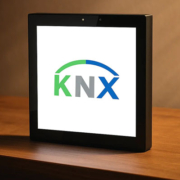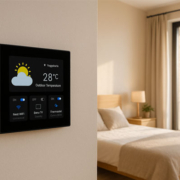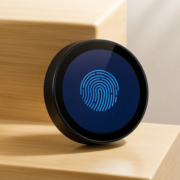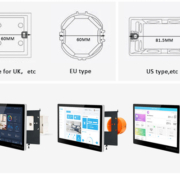How Smart Home Automation Works: Everything You Need to Know
In today’s digital age, the concept of a “smart home” has evolved from a futuristic idea into a practical reality. Smart home automation is revolutionizing how we live, offering greater comfort, convenience, security, and energy efficiency through technology.
But what exactly is smart home automation, and how does it work? In this article, we’ll break down the key concepts, components, and benefits—plus introduce you to solutions from Portworld, a leading provider of smart home control panels.
What is Smart Home Automation?
Smart home automation is the process of controlling and automating household devices and systems—like lighting, climate, entertainment, appliances, and security—using a central platform or connected network. Instead of manually adjusting every device, smart home automation enables you to create predefined rules or routines, and manage everything from your smartphone or smart control panel.
For example:
- Your thermostat adjusts based on your daily schedule.
- Lights turn off automatically when no one is in the room.
- Doors lock themselves at night or when you leave home.
- Cameras stream live feeds to your phone.
- You say, “Good night,” and your home prepares for bedtime.
How Does Smart Home Automation Work?
Smart home automation systems rely on a combination of hardware, software, and connectivity to function. Here’s how the process works:
1. Smart Devices
These include light bulbs, thermostats, smart plugs, motion sensors, cameras, door locks, and more. Each device can connect to a central system, either wirelessly (Wi-Fi, Zigbee, Z-Wave, Bluetooth) or via Ethernet.
2. Central Control System
At the heart of every smart home is a smart control panel or a hub. This is the interface that allows users to program, monitor, and interact with their smart devices. Systems like Portworld’s 4-inch and 5-inch smart control panels offer touch-screen control, voice integration, and customizable automation scenes.
3. Connectivity & Integration
Devices are connected through a home network, often using a wireless protocol. Cloud platforms allow for remote access via mobile apps, while local servers can handle offline automations for security and speed.
4. Automation Rules (If-Then Logic)
These are the real brain behind smart home systems. For example:
- If it’s after sunset, then turn on the porch light.
- If a door is opened, then send a phone notification and activate the camera.
These rules are programmed via apps or control panels and can be triggered by time, sensors, or user input.
Benefits of Smart Home Automation
Adopting smart home automation comes with numerous advantages:
- Convenience: Control your entire home with a few taps or voice commands.
- Energy Efficiency: Automatically turn off unused lights and appliances.
- Enhanced Security: Monitor your home in real-time, even when you’re away.
- Comfort: Set the perfect temperature or ambiance without lifting a finger.
- Customization: Create routines that match your lifestyle.
Portworld is a trusted manufacturer of advanced smart home control panels, specializing in 4-inch and 5-inch touch screen devices built for seamless automation and integration.
Key Features of Portworld Panels:
- Android-based OS for flexible software development
- PoE-enabled for easy power and connectivity
- Supports Wi-Fi, Bluetooth, Zigbee, and RS485 protocols
- Tailored engineering and SKD/CKD support for integrators
- Built-in intelligent automation capabilities
With Portworld panels, users can build a fully connected, customized home automation ecosystem that’s easy to manage and scalable for future expansion.
Common Smart Home Automation Scenarios
Here are a few real-life use cases of smart home automation:
- Morning Routine: At 7:00 AM, your bedroom lights gradually brighten, your coffee machine starts, and the thermostat warms up your space.
- Away Mode: When you leave, all lights turn off, doors lock automatically, and security cameras activate.
- Movie Night: With one tap, the lights dim, the blinds close, and your entertainment system powers on.
The Future of Smart Home Automation
The future of smart home automation lies in AI, machine learning, and greater interoperability. Upcoming trends include:
- Voice AI assistants with deeper integration
- Predictive automation based on behavior patterns
- Enhanced privacy and data security
- Integration with smart energy and solar systems










